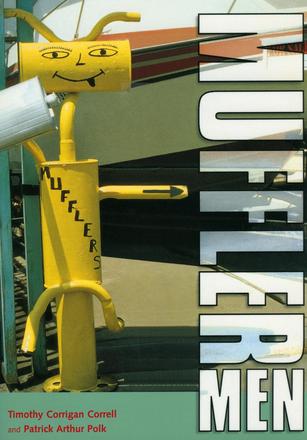
How creations welded from the scrapheap have become a folk art rage
Description
Art can appear in the most unexpected places. Muffler men, for example, have become one of the most striking and remarkable of recent folk art creations. From Walla Walla to Daytona, quirky mannikins constructed from discarded automobile mufflers are popping up across America. Cobbled together as business signposts, these comical sculptures are sprouting outside automotive repair shops everywhere.
Car debris harmonizes with human anatomy as rusty cast-offs assume a new identity as savvy objets d'art. Signage turns into art as mechanics fashion cowboys, dogs, robots, space aliens, and a host of other creatures from metal scraps of the profession and with the aid of their workaday tools and acetylene.
If for only a passing moment, the muffler men enliven the roadside and help to break up the monotony of daily commutes. More than mere advertisements, they interact with their communities by greeting the passerby. The significance of muffler sculptures turns profound when they become local celebrities and are hailed as community landmarks.
But, what do they mean? For the creative mechanic who made them, they are exclamatory signposts and store mascots. For the academic folklorists who analyze them, they are symbolic icons with cultural meanings that proclaim individual identity and group membership. For the collectors who treasure them, they are exemplars of "outsider art. " For most non-specialists who wave as they speed past, they are funky delights.
This colorful book documents the widespread appeal of muffler men as a form of occupational art that enriches the workplace, the local environment, and now the art gallery.
Reviews
"Muffler men are the cigar-store Indians of the late twentieth century, trade figures made to stand in front of shops to advertise what is sold inside. Both are considered forms of folk art, but the skinny metal figures with shimmering muffler heads and torsos and pipe-thin legs found outside auto repair shops are wittier, more imaginative, and flamboyantly painted. . . . "
--Rita Reif, The New York Times
- UPM